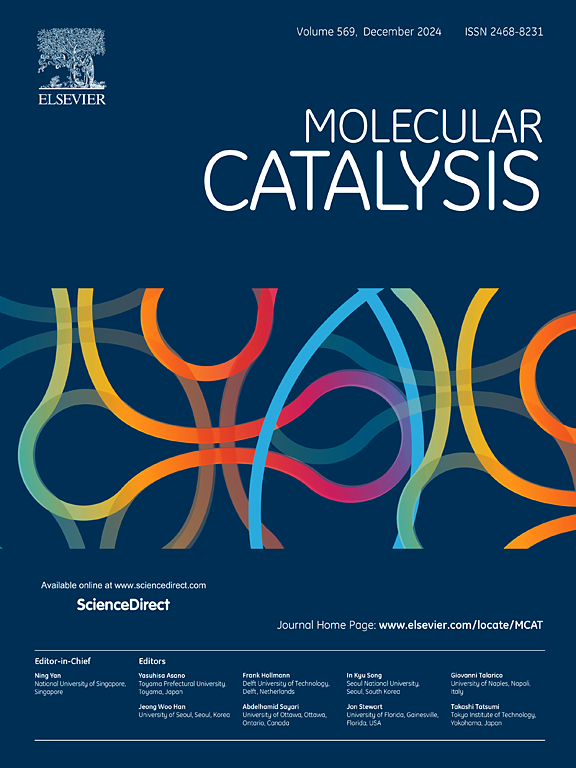Inorganic-organic TiO2/Bi-MOF Z-scheme heterojunction photocatalysts for promoting NO deep oxidation
IF 3.9
2区 化学
Q2 CHEMISTRY, PHYSICAL
引用次数: 0
Abstract
Excessive emission of nitrogen oxides (NOx) has upset the balance of the natural nitrogen cycle, leading to environmental pollution problems such as acid rain, haze and greenhouse effect. In this study, loading TiO2 on the surface of bismuth-based metal MOFs was proposed to form inorganic-organic TiO2/Bi-MOF Z-scheme heterojunction composites for NO removal. The results showed that TiO2/Bi-MOF-0.3 (T/B-0.3) possessed excellent photocatalytic activity, with a single NO removal efficiency of 61.7 % for 30 min and maintained 52.5 % removal efficiency of NO even after five cycles. The boost in photocatalytic activity stems from the heterostructure of TiO2 on the Bi-MOF surface, which enhances the movement and separation of photogenerated charge carriers. In addition, the formation of Z-scheme heterojunctions contributes to the production of more active species for oxidizing NO Possible NO oxidation mechanisms based on energy band structure theory, active species, and in situ DRIFTS are also proposed. This research may introduce an innovative approach for the development of photocatalysts aimed at addressing atmospheric pollutants.

求助全文
约1分钟内获得全文
求助全文
来源期刊

Molecular Catalysis
Chemical Engineering-Process Chemistry and Technology
CiteScore
6.90
自引率
10.90%
发文量
700
审稿时长
40 days
期刊介绍:
Molecular Catalysis publishes full papers that are original, rigorous, and scholarly contributions examining the molecular and atomic aspects of catalytic activation and reaction mechanisms. The fields covered are:
Heterogeneous catalysis including immobilized molecular catalysts
Homogeneous catalysis including organocatalysis, organometallic catalysis and biocatalysis
Photo- and electrochemistry
Theoretical aspects of catalysis analyzed by computational methods
 求助内容:
求助内容: 应助结果提醒方式:
应助结果提醒方式:


